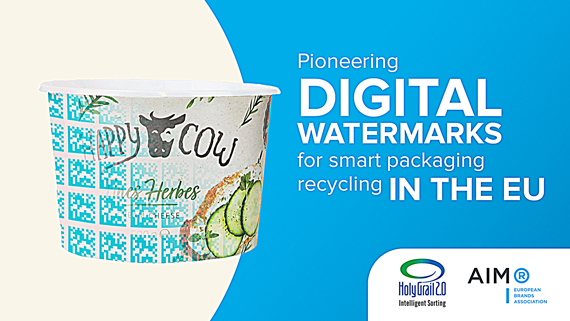
- Packaging industry aims to develop digital watermarking technology
- More than 120 companies and organisations join forces to assess the contribution of a pioneering digital watermark technology to better high-quality recycling
- Better sorting of post-consumer waste yields higher quality of recyclates and contributes to a circular plastic economy
BASF has joined "HolyGrail 2.0 – Digital watermarks for accurate sorting and high-quality recycling” as a member. The initiative aims to increase plastic recycling rates by adding imperceptible digital watermarks to product packaging.
Under the auspices of AIM, the European Brands Association, BASF and more than 120 companies and organisations from the packaging value chain have joined forces in the initiative to prove the viability of digital watermarking technologies for accurate sorting and the business case at large scale.
"The plastics used for packaging are extremely valuable materials to protect goods and reduce food waste. When plastics are sorted properly, we can offer a suitable additive package to return them to high-performance applications. Thus, we are excited to support HolyGrail 2.0 in their search for optimised and circular plastic packaging,” said Dr Achim Sties, Senior Vice President, Performance Chemicals Europe, BASF.
Ineffective sorting is one of the fundamental barriers to wider recycling of lightweight packaging waste and thus, in achieving a circular economy for packaging. The better the sorting and identification of packaging, the more efficient the mechanical recycling process and the better the quality of recyclates.
The discovery of digital watermarking was made under the New Plastics Economy programme of the Ellen MacArthur Foundation, which investigated different innovations to improve post-consumer recycling. Digital watermarks were found to be the most promising technology. The "HolyGrail 2.0” initiative will include the launch of an industrial pilot to prove the viability of digital watermark technologies for more accurate sorting of packaging and higher-quality recycling, as well as the business case at large scale.
Digital watermarks are imperceptible codes, the size of a postage stamp, covering the surface of a consumer goods packaging. They can carry a wide range of attributes such as manufacturer, Stock Keeping Unit (SKU), type of plastics used and composition for multilayer objects or food versus non-food usage.




